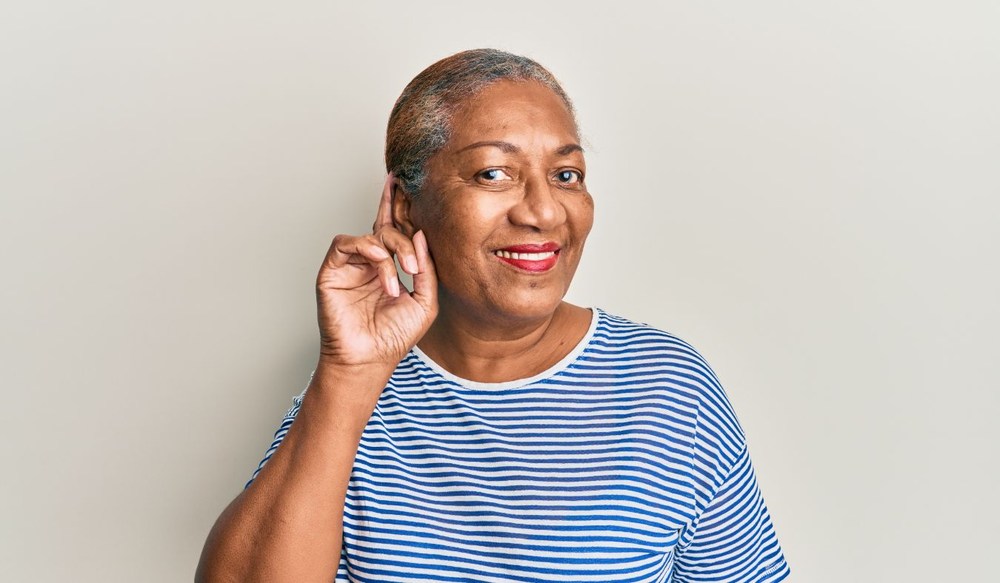The Importance of Follow-Up Care in Hearing Health
Getting hearing aids is an important first step, but ongoing follow-up

By: admin | August 28, 2024
Hearing loss can seem like a challenging path to tread, filled with numerous decisions and choices. However, the good news is that the advancements in FDA-approved hearing solutions have opened up new possibilities for those looking to enhance their auditory experience. This isn’t just about the latest technology; it’s about your ability to engage with your environment, participate in conversations and appreciate the everyday sounds that often go unnoticed. Let’s begin by understanding these innovative devices and how they differ from traditional hearing aids.
Traditional hearing aids are prescription devices designed to assist individuals with hearing loss by amplifying sound. These devices are carefully customized to meet each person’s specific hearing needs, ensuring the right level of amplification across different frequencies. A hearing instrument specialist fits the hearing aids, adjusting the settings to match the user’s unique hearing profile. Traditional hearing aids generally consist of a microphone to capture sound, an amplifier to increase its volume and a speaker to deliver the enhanced sound to the ear. They provide a reliable and effective solution for managing hearing loss, helping individuals improve their hearing and participate more fully in daily activities.
Hearing aids come in various styles, each designed to cater to different preferences and needs. Behind-the-ear (BTE) models rest on the outer ear and connect to an ear mold inside the ear canal, offering a range of power levels and features. In-the-ear (ITE) hearing aids fit entirely within the outer ear, providing a more discreet option while accommodating a range of hearing losses. In-the-canal (ITC) devices are smaller and fit partially inside the ear canal, making them less visible but potentially more challenging to handle. Completely-in-canal (CIC) models are even smaller, sitting deep within the ear canal for maximum invisibility, although they may have limitations in power and battery life. Finally, invisible-in-canal (IIC) hearing aids are the smallest, designed to be virtually invisible while providing subtle amplification.
Each style offers different benefits in terms of visibility, comfort and hearing capability, allowing individuals to choose based on their specific needs and preferences.
Over-the-counter (OTC) hearing aids are designed for adults ages 18 and older who experience mild to moderate hearing loss. These devices amplify sounds and are available without a prescription, allowing consumers to purchase them in stores or online. The user is responsible for setting up the device, including fitting and tuning the sound, which differs from the personalized approach taken with prescription hearing aids.
While OTC hearing aids offer a convenient option, they lack the customization and professional support that comes with prescription devices fitted by a hearing instrument specialist. Although a hearing exam is not required to purchase OTC hearing aids, consulting with a hearing instrument specialist is recommended. This ensures that the device is appropriate for your specific hearing needs and provides valuable guidance on its proper use.
The development of hearing aids has been a process of continuous improvement and technological advancement. Initially, hearing aids were simple ear trumpets made from materials like wood, metal or animal horns, designed to amplify sound. These early devices were effective to a certain extent but were limited in how much sound they could amplify and were often cumbersome to use. The breakthrough came in 1898 with the invention of the Akouphone by Miller Reese Hutchison. This early electric hearing aid used a carbon transmitter to enhance sound amplification significantly, setting the stage for future innovations.
The 20th century brought further advancements in hearing aid technology. In the 1920s, vacuum tubes were introduced, offering improved sound amplification but creating devices that were fragile and prone to overheating. The introduction of transistors in the 1950s revolutionized hearing aids by making them smaller, more durable and more affordable. The 1990s saw the advent of digital hearing aids, which used digital signal processing to improve sound quality and reduce background noise. This era also introduced features like feedback suppression and adjustable settings.
The evolution of hearing aids took a significant turn in 2022 with the FDA’s introduction of a new category of OTC hearing aids. This new category was specifically designed for adults with perceived mild to moderate hearing loss. By allowing these devices to be purchased directly by consumers without a prescription, the FDA aimed to make hearing aids more accessible to a broader audience. This regulatory change reflects a growing recognition of the need for greater accessibility and affordability in hearing health care.
OTC hearing aids offer several advantages that can benefit individuals with mild-to-moderate hearing loss. One key benefit is their accessibility. OTC hearing aids are available for purchase without a prescription, making it easier for people to obtain hearing assistance quickly and conveniently. This can be particularly useful for those who need immediate support or want to explore hearing aid technology before committing to a prescription device.
Additionally, OTC hearing aids typically come at a lower cost compared to prescription devices. This affordability makes them a viable option for individuals who are cautious about investing in more advanced hearing aids without first understanding their needs. They can also serve as a useful backup or spare in case regular hearing aids are damaged or require repairs. While OTC hearing aids are not a substitute for the comprehensive fitting and customization provided by prescription devices, they provide a practical solution for immediate needs and can help individuals become more comfortable with hearing aid technology.
OTC hearing aids have some limitations compared to prescription devices. One major drawback is the lack of customization. OTC devices are designed to be more general, which means they may not address individual hearing needs as precisely as prescription hearing aids. This can result in less effective amplification and a less optimized listening experience.
OTC hearing aids may also not be as powerful or feature-rich as prescription models. They are typically intended for individuals with mild-to-moderate hearing loss and may not provide the necessary support for more severe cases. Additionally, OTC hearing aids are generally not recommended for children or individuals with changing or complex hearing needs, as they lack the personalized adjustments that a hearing instrument specialist can provide. As a result, those who need frequent updates or specialized features might find OTC devices insufficient for their requirements.
Selecting the right hearing aid involves several important considerations to ensure it meets your unique needs and preferences. First and foremost, it’s essential to understand the type and degree of hearing loss you experience. A comprehensive hearing evaluation by a hearing instrument specialist will provide insights into the specific frequencies affected and the severity of your loss. This information helps narrow down the options and determine whether an OTC or prescription device would be more appropriate for your needs.
Once you have a clear understanding of your hearing loss, consider your lifestyle and daily activities. Different hearing aids come with various features tailored to specific environments, like noise reduction for busy settings or Bluetooth connectivity for streaming audio. OTC hearing aids may offer basic amplification, but prescription devices often provide advanced customization to address specific listening challenges. Your lifestyle, whether you are frequently in social settings or need enhanced hearing for one-on-one conversations, will guide you in selecting a device with the right features.
Comfort and ease of use are also crucial factors. The design and fit of a hearing aid can greatly impact how comfortable it is to wear throughout the day. Prescription devices typically offer more fitting options and adjustments, ensuring a better and more comfortable fit. OTC hearing aids may come with standard fit options, which might not cater to individual ear shapes and sizes as effectively. Trying out different models, if possible, will help you find the most comfortable option.
Finally, consider the support and follow-up care available. Prescription hearing aids come with the benefit of ongoing support from a hearing instrument specialist, who can assist with adjustments and troubleshooting. This professional guidance ensures the device functions optimally and addresses any concerns you might have. OTC hearing aids generally lack this level of personalized support, making it important to weigh the value of professional assistance against the benefits of a more accessible purchase option. By carefully evaluating these factors, you can make a more informed decision that best suits your hearing needs and lifestyle.
Ultimately, the decision between OTC and prescription hearing aids should be guided by an understanding of your hearing health, lifestyle requirements and the level of support you expect from hearing care professionals. Trying out different devices, seeking professional advice and carefully evaluating the features and benefits of each option will help you select the hearing aid that best meets your needs and enhances your quality of life.
A HIS plays a crucial role in helping you choose the right hearing technology tailored to your specific needs. By conducting a thorough hearing evaluation, a HIS can accurately assess the type and degree of your hearing loss. This detailed assessment is essential because it guides the selection of hearing aids that can address your unique hearing challenges effectively. The HIS will consider various factors, including the severity of your hearing loss, your lifestyle requirements and any specific preferences you might have regarding the appearance and functionality of the device.
In addition to recommending appropriate hearing aids, a HIS provides valuable insights into the latest technology and features available. They can explain how different advancements, like digital signal processing, noise reduction and connectivity options, may benefit you based on your daily activities and listening environments. This guidance ensures you understand how various features will impact your overall hearing experience.
Furthermore, a HIS offers support throughout the fitting process, including customizing the device settings to match your hearing profile and adjusting it for optimal performance. They also provide ongoing follow-up care to address any issues and make necessary adjustments, ensuring your hearing aids remain effective and comfortable. With the expertise of a HIS, you receive personalized recommendations and support, helping you make an informed decision and achieve the best possible hearing outcomes.
From wireless connectivity to personalized settings, prescription and over-the-counter devices offer an array of features designed to enhance your auditory experience. However, remember that while technology is crucial, professional advice from a hearing specialist remains invaluable in guiding you towards the solution best suited for your lifestyle and specific needs.
Kenwood Hearing Centers is here to assist you in this journey towards improved auditory health. Our experienced team of specialists is ready to provide expert advice and support tailored specifically for you. For more information or to schedule a consultation, feel free to contact us at our El Cerrito, CA office calling (510) 768-7091.

Getting hearing aids is an important first step, but ongoing follow-up
By: admin | October 20, 2025

When someone you care about starts having trouble hearing, it affects the
By: admin | July 29, 2025

Travel puts your ears through more than you might realize. Whether
By: admin | June 20, 2025
